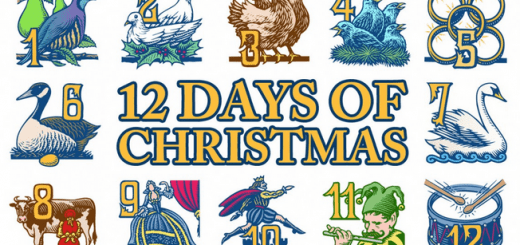“O Holy Night” (Christmas Song)
“O Holy Night” is meant to be a celebration and to a lesser degree detailing the birth of Jesus, i.e. the historical event which lies at the foundation of the Christmas holiday. It has been noted that this piece was quite controversial when it first came out, being the product of a church yet not being considered religious enough by many parties.
It was also written during an era in which France was relatively unstable from a political standpoint. And it has been put forth that said reality, i.e. the First French Revolution heading into the Second French Revolution (the latter of which did actually occur the year after this song was put together), also influenced the tune’s lyrical content.
But to those of us who are not familiar with the political and religious intricacies of early 19th century France, the wording of “O Holy Night” will most likely read as more or less a straight-up nativity-based Christmas carol, though one sentimentally centered on Jesus’s ideological effect on mankind as opposed to his birthing.
So yes, there are various lyrics dedicated to physically depicting the nativity scene. For instance, we have a shoutout to “the (Three) Wise Men” who visited Baby Jesus, as well the “lowly manger” in which he was born.
But the greater emphasis is ultimately put on Jesus’s teachings and what his presence was meant to represent. For instance, there is the recognition that “he taught us to love one another”. But where this song proves politically controversial, theoretically, is when Jesus is also depicted as a champion of freedom, even ‘breaking the chains of slaves’ and ‘ceasing all oppression’.
That is to say that the third verse of this song definitely reads like a passage that would for instance ruffle some feathers in a country on the brink of its second revolution in 50 years.
Also to note, “O Holy Night” had undergone some lyrical changes from its original composition in 1843 until being translated into English in 1855 and becoming the song we know today. So whereas slavery had been outlawed in France in late 18th century, it was still alive and kicking in the US during the 1850s.
And the figure who translated it into English was an abolitionist. So even though there are a couple of reference to slavery as well as a strong liberation ideology found in the original version of this tune (which is entitled “Cantique de Noël”), it seems as if John Sullivan Dwight, the aforementioned figure, really went about hammering that point home, i.e. that Jesus wasn’t the type to approve of us enslaving and oppressing one another.
In Conclusion
So conclusively, “O Holy Night” may start off more akin to a traditional Christmas carol, as in a song which is by and large based on the Nativity of Jesus. But as it progresses it becomes more politically-inclined, so to speak.
And how those two concepts are connected is that Jesus is the one who is presented as, in the fullness of time, truly bringing freedom and equality to the world, which is arguably the main reason why his birth is noteworthy in the first place.

Facts about “O Holy Night”
This song dates back to 19th century France and was originally known as “Cantique de Noël”, actually being a poem entitled Minuit, Chrétiens set to music.
The lyrics were authored by a poet named Placide Cappeau (1808-1877), who was actually more akin to a secular artist and was enlisted to do so by his local church (in recognition of their organ having been renovated). And the music it was set to was composed by another Frenchman, Adolphe Adam (1803-1956), who by the way was Jewish.
Minuit, Chrétiens was written in 1843. And it was set to music, as detailed above, in 1847. And the English version of that piece, i.e. what came to be known as “O Holy Night”, came about in 1855, as translated by a Boston-based minister named John Sullivan Dwight (1813-1893).
Furthermore, to note, the lyrics of Minuit, Chrétiens are not identical to those of “O Holy Night”.
It has been noted that, unlike other comparably-popular Christmas carols, “O Holy Night” is more difficult to recite, requiring the likes of professional singers to properly pull off. But with that said, a number of artists have dropped their own renditions throughout the years, including:
- Nat King Cole (1960)
- Mahalia Jackson (1968)
- Mariah Carey (1994)
- Céline Dion (1998)
“O Holy Night” is not to be confused with another popular 19th century European-originated Christmas carol, “Silent Night”.










This was EXACTLY what I was looking for! This song brings me to my KNEES! I love it, but also wanted a background! Thank you! 🙌 Praise the Lord!